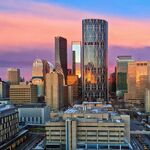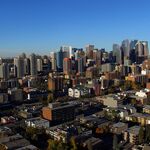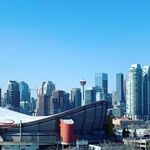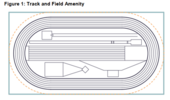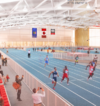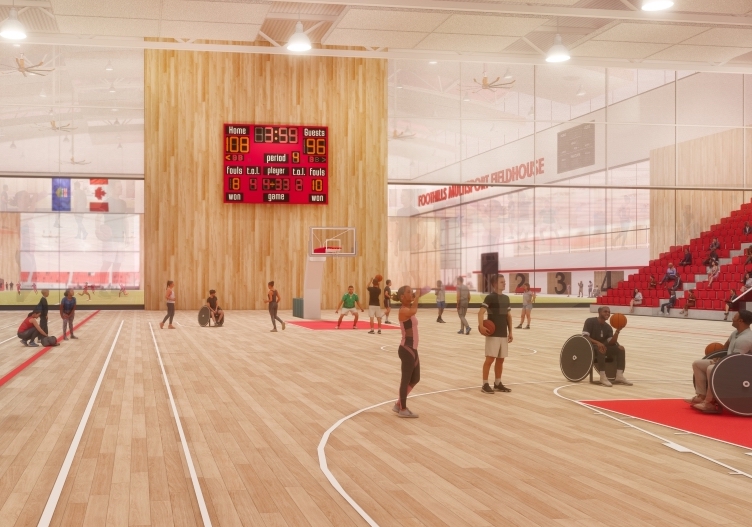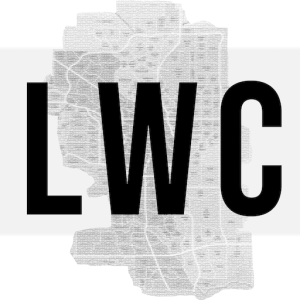ByeByeBaby
Active Member
Big update on this at committee yesterday; here's the PDF or a link to CBC coverage.

Basically, the report details the 'baseline amenity mix', ie the facilities that should be included. There are three basic components:
Track and Field- 10.5k sq m; $8M low end economic benefit

A 200m running track with space for training in other track/field events; 130m straight track (100m sprint/110m hurdles) 1000 seats expandable to 5000 seats.
The 200m track is hydraulic, which means it can be banked for running events or flattened for other purposes.
Gymnasia - 9.8 sq m; $10M low end economic benefit
A 'feature gymnasium' that has retractable seating for 3000 and can be divided into three basketball court sized areas -- this is roughly the size of the Jack Simpson gym at the U of C
Six more individual basketball-sized courts (which could also host volleyball, 4x badminton/pickleball, etc.), as well as two multi-use courts -- I believe these are a little wider than standard basketball, and could be combined for a single (int'l standard) futsal or tennis match, or used individually for martial arts or whatever the hell padel is.


Artificial Turf Field - 17k sq m; $2M low end economic benefit
A field 1.5x the size of a FIFA soccer pitch; it can also hold a bunch of youth soccer games -- 3 9v9 / 6 7v7 / 12 5v5 games (for increasingly younger age groups). Also big enough to hold CFL or Rugby League (that might be a little tight), and a bunch of other things, including two baseball diamonds with 200 ft outfield fences. Nothing about seating here.


One thing that's clear from the presentation is that they're trying to make sure that they can show it used for every oddball sport (oddball - that's a great name for a new sport) even if 90% of the time it'll be a handful of common sports. I joke, a little, but there were twice as many speakers from padel associations as there were from soccer.
Basically, the report details the 'baseline amenity mix', ie the facilities that should be included. There are three basic components:
Track and Field- 10.5k sq m; $8M low end economic benefit
A 200m running track with space for training in other track/field events; 130m straight track (100m sprint/110m hurdles) 1000 seats expandable to 5000 seats.
The 200m track is hydraulic, which means it can be banked for running events or flattened for other purposes.
Gymnasia - 9.8 sq m; $10M low end economic benefit
A 'feature gymnasium' that has retractable seating for 3000 and can be divided into three basketball court sized areas -- this is roughly the size of the Jack Simpson gym at the U of C
Six more individual basketball-sized courts (which could also host volleyball, 4x badminton/pickleball, etc.), as well as two multi-use courts -- I believe these are a little wider than standard basketball, and could be combined for a single (int'l standard) futsal or tennis match, or used individually for martial arts or whatever the hell padel is.
Artificial Turf Field - 17k sq m; $2M low end economic benefit
A field 1.5x the size of a FIFA soccer pitch; it can also hold a bunch of youth soccer games -- 3 9v9 / 6 7v7 / 12 5v5 games (for increasingly younger age groups). Also big enough to hold CFL or Rugby League (that might be a little tight), and a bunch of other things, including two baseball diamonds with 200 ft outfield fences. Nothing about seating here.
One thing that's clear from the presentation is that they're trying to make sure that they can show it used for every oddball sport (oddball - that's a great name for a new sport) even if 90% of the time it'll be a handful of common sports. I joke, a little, but there were twice as many speakers from padel associations as there were from soccer.
